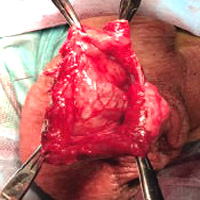Be cautious of “complex hydrocele” on ultrasound in young men

Submitted: September 30, 2019
Accepted: December 23, 2019
Published: April 7, 2020
Accepted: December 23, 2019
Abstract Views: 1651
PDF: 4986
Publisher's note
All claims expressed in this article are solely those of the authors and do not necessarily represent those of their affiliated organizations, or those of the publisher, the editors and the reviewers. Any product that may be evaluated in this article or claim that may be made by its manufacturer is not guaranteed or endorsed by the publisher.
All claims expressed in this article are solely those of the authors and do not necessarily represent those of their affiliated organizations, or those of the publisher, the editors and the reviewers. Any product that may be evaluated in this article or claim that may be made by its manufacturer is not guaranteed or endorsed by the publisher.

 https://doi.org/10.4081/aiua.2020.1.61
https://doi.org/10.4081/aiua.2020.1.61



